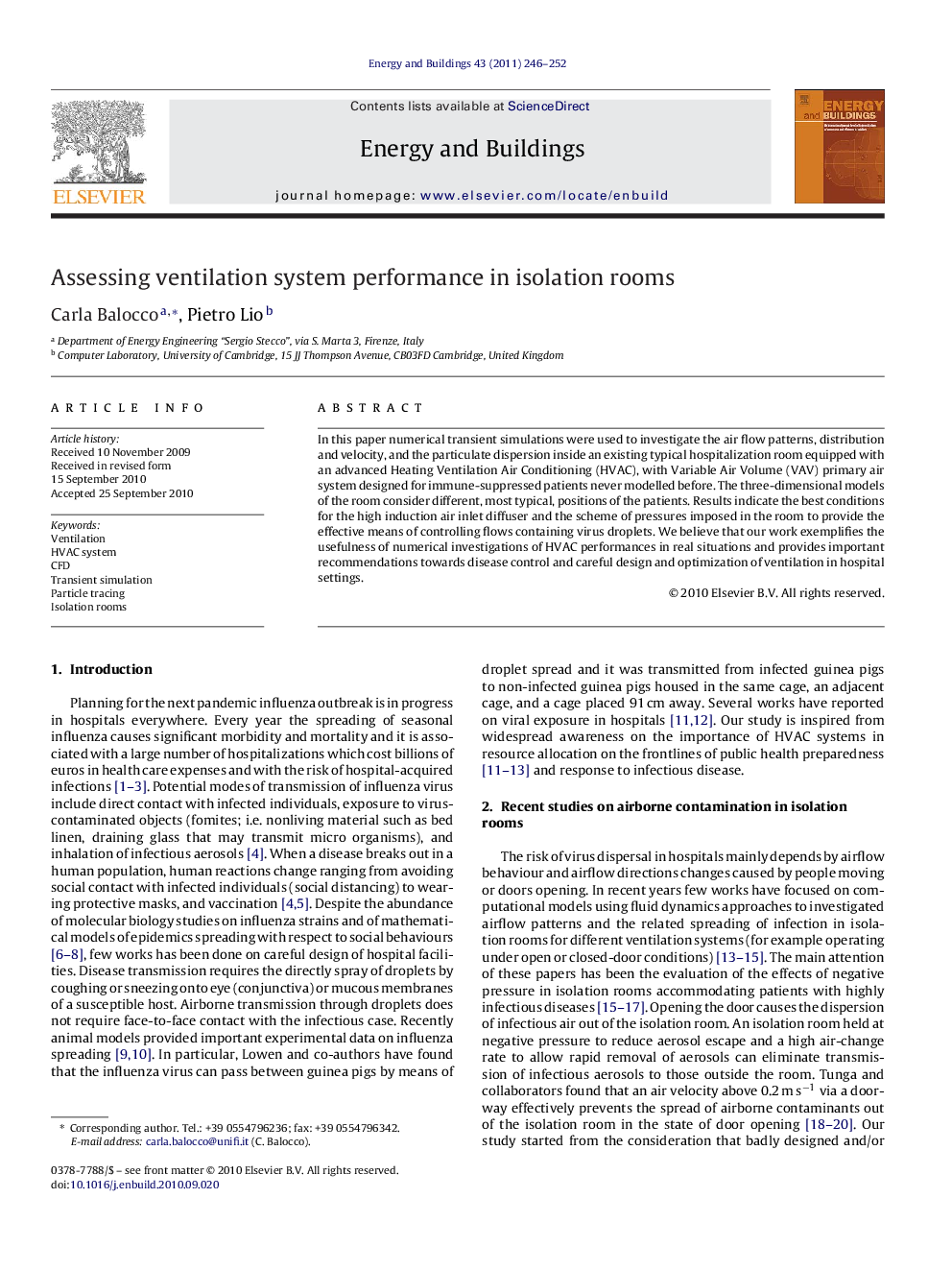| کد مقاله | کد نشریه | سال انتشار | مقاله انگلیسی | نسخه تمام متن |
|---|---|---|---|---|
| 264469 | 504101 | 2011 | 7 صفحه PDF | دانلود رایگان |

In this paper numerical transient simulations were used to investigate the air flow patterns, distribution and velocity, and the particulate dispersion inside an existing typical hospitalization room equipped with an advanced Heating Ventilation Air Conditioning (HVAC), with Variable Air Volume (VAV) primary air system designed for immune-suppressed patients never modelled before. The three-dimensional models of the room consider different, most typical, positions of the patients. Results indicate the best conditions for the high induction air inlet diffuser and the scheme of pressures imposed in the room to provide the effective means of controlling flows containing virus droplets. We believe that our work exemplifies the usefulness of numerical investigations of HVAC performances in real situations and provides important recommendations towards disease control and careful design and optimization of ventilation in hospital settings.
Research highlights▶ Computational fluid dynamics analysis was used to point out that when the design is appropriate, the ventilation systems that provide laminar flow conditions are the best choice among a large comparison of flows and ventilation systems to control the risk of contaminant and viruses diffusion and deposition. ▶ The placement of an air inlet “turbulence high induction” ceiling diffuser is very critical: the high induction air diffuser, supplies air at a temperature less than the skin surface temperature of the patient heads and this produces effects on the air flow pattern. The placement of the diffuser immediately over the patient bed would result in uncomfortable drafts being projected directly towards the patient. ▶ The airflow pattern is a significant parameter influencing the region of droplet and particles fallout, concentration and diffusion within the isolation room when the door is kept closed. ▶ The positioning of the air-supply inlets in the ceiling and the exhaust vents at opposite side of the room and in the ceiling, provides an updraft effect and infection control efficiency. ▶ Given the conspicuous efforts in estimating the number of infections and casualties expected for seasonal and pandemic diseases, the introduction of the practice of performing transient simulation on real cases will be an effective, relatively low cost, means of prediction and control.
Journal: Energy and Buildings - Volume 43, Issue 1, January 2011, Pages 246–252